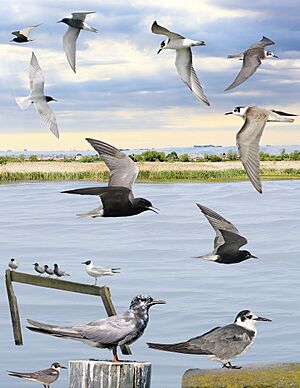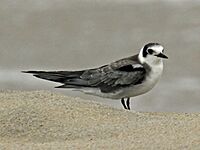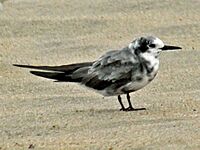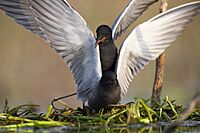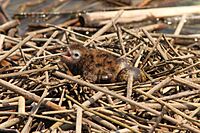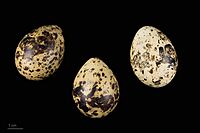Black tern facts for kids
Quick facts for kids Black tern |
|
|---|---|
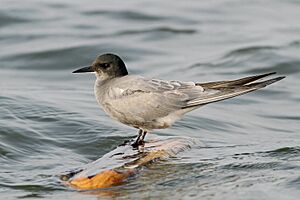 |
|
| Conservation status | |
| Scientific classification | |
| Genus: |
Chlidonias
|
| Species: |
niger
|
| Subspecies | |
|
|
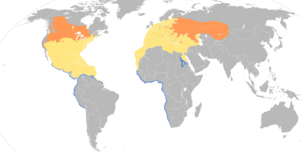 |
|
| Synonyms | |
|
Sterna nigra Linnaeus, 1758 |
|
The black tern (Chlidonias niger) is a small tern bird. You can usually find it near fresh water in Europe, Western Asia, and North America. As its name suggests, this bird is mostly dark in color. During the breeding season, it can sometimes look blue in certain light. This is why it was once called "blue darr" in old English.
The name Chlidonias comes from an old Greek word meaning "swallow-like." This is because the black tern flies a lot like a swallow. Another old English name for it was "carr swallow," meaning "lake swallow." The word niger comes from Latin and means "shining black."
Contents
What Does a Black Tern Look Like?
Adult black terns are about 25 centimeters (10 inches) long. Their wings can spread out to about 61 centimeters (24 inches) wide. They usually weigh around 62 grams (2.2 ounces).
These birds have short, dark legs. Their beak is black, short, and looks a bit weak. It measures about 27 millimeters (1 inch) long.
Colors and Markings
Black terns have a dark gray back. Their front wings are white. Their head, neck, and belly are black. The black on their head forms a cap that covers their ears, looking like a full hood. Their tail is light brownish-gray and looks square-shaped.
Their face is white. Young black terns have a dark triangle in front of their eye. They also have a wide white collar around their neck. You might see some grayish-brown smudges on the sides of their white chest. These marks are usually small and hard to see.
When it's not breeding season, most of the black color changes to gray. Only the cap on their head stays black. Their upper feathers look dull, with pale edges. Their lower back (rump) is brownish-gray.
The black terns found in North America are a bit different from the ones in Europe. Some people even think they are a separate species.
How They Fly and Sound
When a black tern flies, it looks very slim. Its wings beat strongly and quickly. It often flies in an uneven way, diving down to the water to find food. This is similar to how other terns fly.
Their call sounds like a high-pitched "kik." If you hear a large group of them, their calls can be very loud!
Where Do Black Terns Live?
Black terns like to breed in freshwater marshes. You can find them across most of Canada, the northern United States, and a large part of Europe and western Asia.
They usually build their nests on floating plants in a marsh. Sometimes, they nest on the ground very close to the water. They lay about 2 to 4 eggs.
Black Terns in England
Long ago, black terns were very common in the marshy areas of eastern England. People said there were "vast flocks" of them, and their calls were "almost deafening." But by the 1840s, most of their breeding grounds were drained for farming. This caused the black terns to disappear from England.
Since then, black terns have tried to come back and breed in England a few times. However, these attempts have not been very successful. There have only been a few breeding records in England and one in Ireland in the last half of the 1900s.
Migration and Food
North American black terns migrate (travel) to the coasts of northern South America for the winter. Some even fly out over the open ocean. Black terns from the Old World (Europe and Asia) spend their winters in Africa.
Unlike some other terns, black terns do not dive deep into the water for fish. Instead, they fly over the water and pick up food from the surface. They also catch insects while flying. They mainly eat insects and small fish, and sometimes amphibians like frogs.
Protecting Black Terns
The number of black terns in North America has gone down recently. This is mainly because their natural homes (marshes and wetlands) are being lost.
The black tern is a bird that is protected by an agreement called the Agreement on the Conservation of African-Eurasian Migratory Waterbirds (AEWA). This agreement helps protect birds that migrate across Africa and Eurasia.
Gallery
-
Black terns mating in Tartu County, Estonia.



